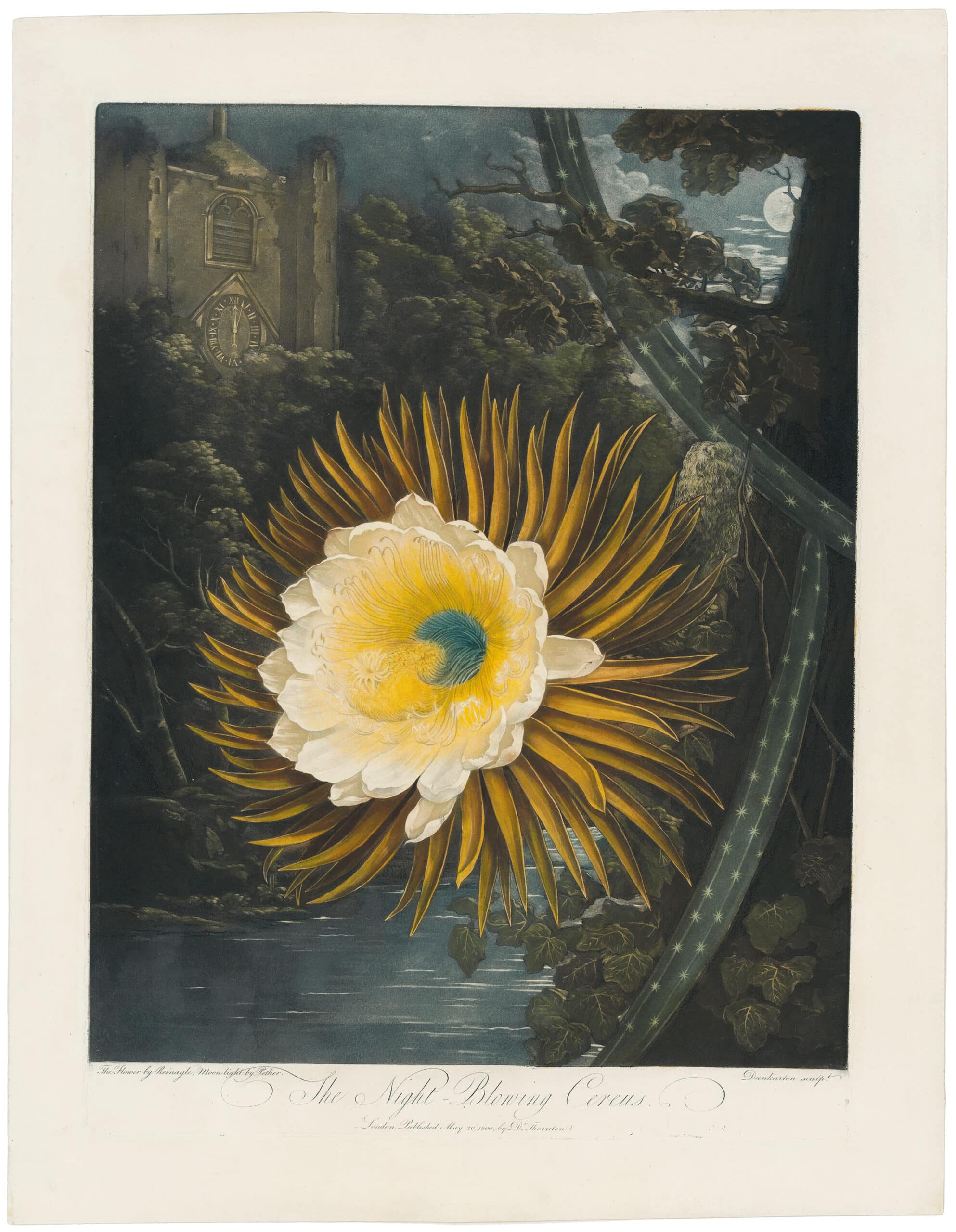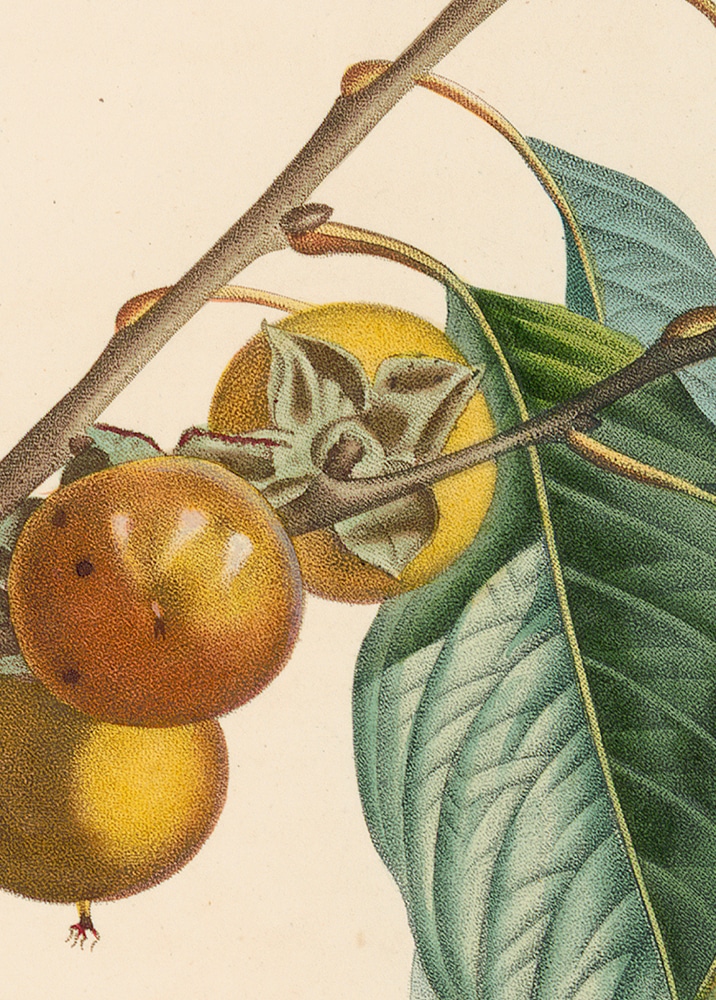Audubon Prints, Information
What is an Engraving? A Guide to Intaglio Printmaking Techniques
When perusing antique prints, the curious observer is likely to notice several different types of prints such as etchings, engravings, aquatints, and mezzotints, among many others. But what do these different printmaking techniques mean and how can we differentiate between them?
Housed under the umbrella category of intaglio printing and often used together in the production of the same print, engraving, etching, aquatint, and mezzotint are all printing processes in which the image is cut into a surface. This article will examine the intaglio printmaking processes of engraving, etching, and their subsidiaries in relation to image production.
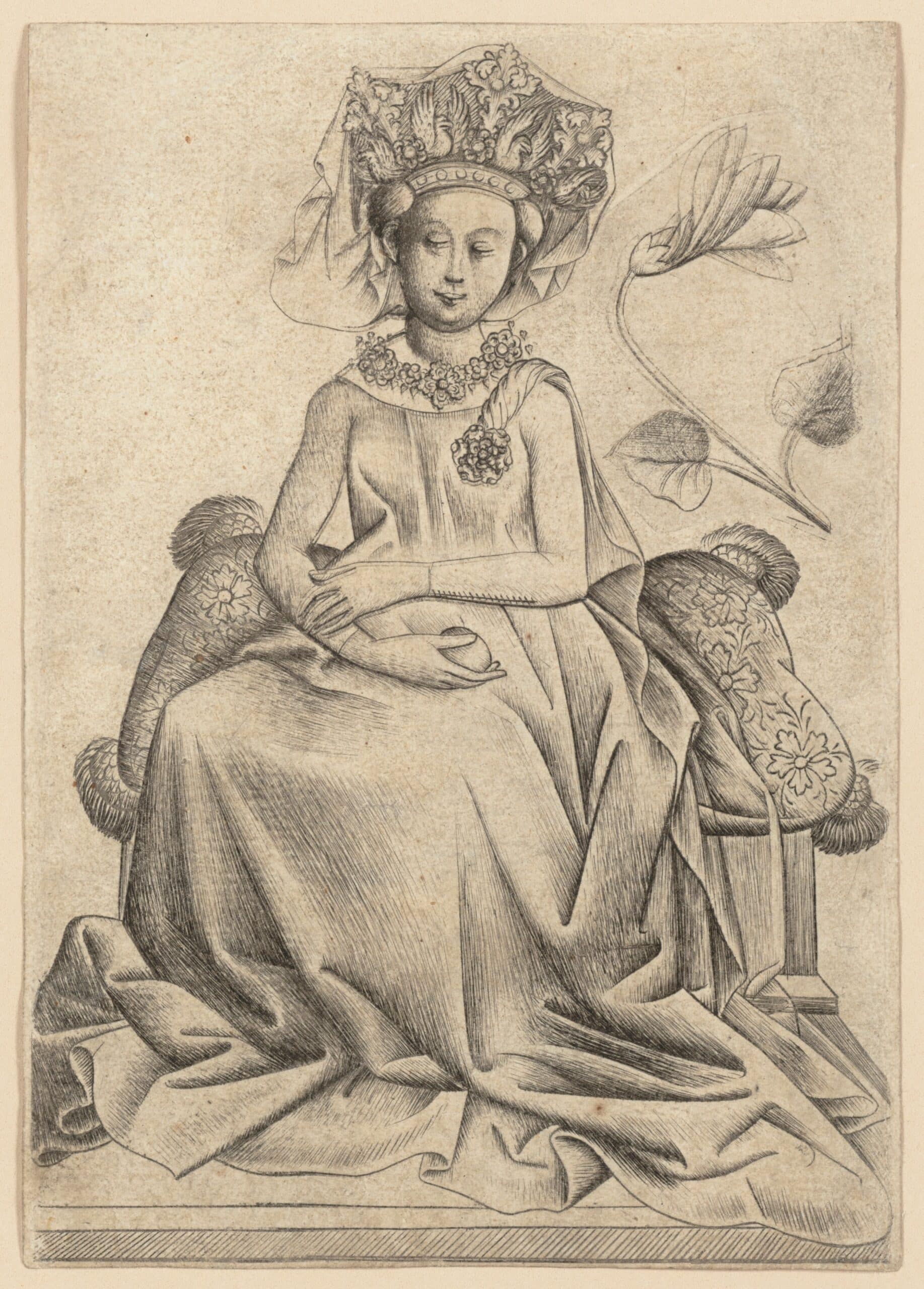
The Queen of Flowers, engraving by the “Master of the Playing Cards” (German, active ca. 1425–50) The MET Collection
Working under the pseudonym “Master of Playing Cards,” this 15th-century German artist was a pioneer in the development of engraving.
With roots in early 15th-century gold smithery, engraving was one of the first printmaking techniques developed to allow for the replication of images in the West. Pioneered by German and Italian metalworkers, engraving was driven by the demand for playing cards and devotional images, leading to advances in the field to inexpensively produce these objects at scale. Along with the establishment of early paper mills and Gutenberg’s press, the 15th century welcomed the possibility of mass image and word dissemination.
Engraving
The process of engraving involves the manual incision of lines into a metal plate using a pointed instrument called a burin. The plate is often made of a pliable metal such as copper or zinc so that minimal exertion is required to carve into its surface. After the plate is polished and its edges are beveled to reduce sharpness, the artist will manually engrave the image onto the surface of the plate. Next, ink is applied to the plate, which is then wiped down with a cloth so that the ink is retained in the carved grooves alone. Lastly, damp paper is laid on the inked plate and pressure is applied, often using a rolling press, to consummate the image transfer.
The resulting printed impression is the mirror reverse of the carved image. This process can be repeated numerous times to produce near-identical impressions of the same image. A typical copper plate engraving can withstand over 200 uses before the delicate metal grooves begin to degrade due to the repeated pressure of the printing press causing the engraved image to soften and lose its crisp appearance.
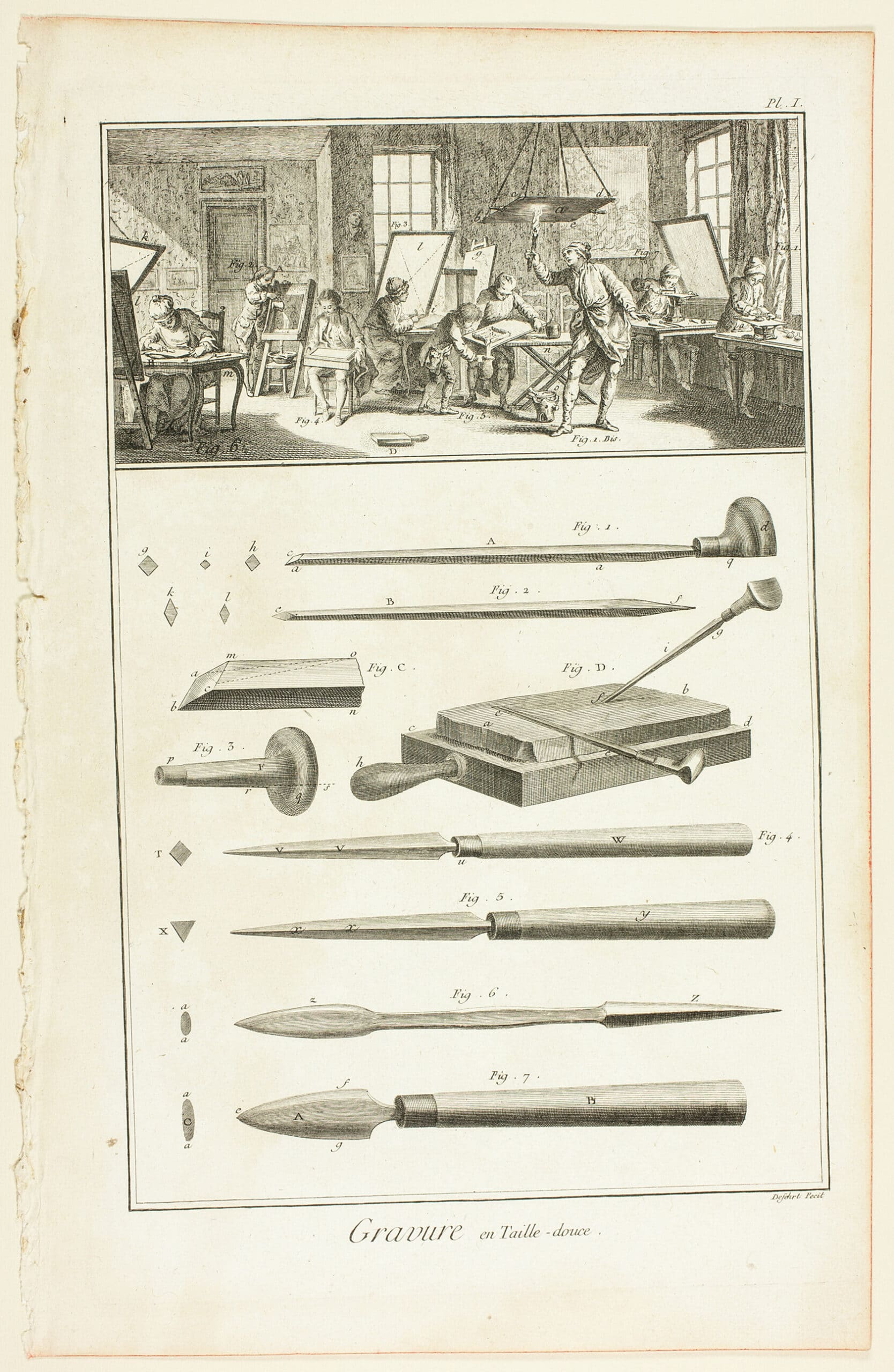
Tools used to engrave copper plates
A. J. Defehrt, Encyclopédie, 1762-1777. The Art Institute of Chicago
Plate mark and crosshatching details
Detail of Besler Deluxe Ed. Pl. 175, Blue-violet wild larkspur, et al
Identifying an Engraving
Engravings can often be identified by several distinguishing characteristics including the presence of a plate mark, which is the outline of the metal plate that is impressed into the paper when pressure is applied to transfer the ink. Plate marks often have the appearance of subtle rectangular embossment or depression in the paper outside the image area. However, if the margins of a print have been trimmed, the plate mark may no longer be present.
Likewise, an engraving can be identified by its distinct, somewhat uniform lines which make up the image. Many engravings such as Basilius Besler’s Blue-violet Wild Larkspur exhibit crosshatching, or crisscrossed lines to give the object depth and dimension. Often, the lines themselves have a slightly raised texture caused by the grooved surface of the printing plate.
After engraving the metal plate, the artist applies ink to the surface, rubs it into the grooves with a cloth, and runs the plate through the printing press to transfer the image to the paper.
Etching
Etching is a close cousin of engraving and the two are sometimes referred to interchangeably despite their distinctions. In the process of etching, acid, rather than manual force, is used to etch lines into the surface of the metal plate. The process begins with applying an acid-resistant ground, often wax or varnish, to a clean metal plate. Once the ground is dry, the artist draws with a pointed tool onto the ground-coated plate, revealing select areas of the metal beneath. Next, the plate is submerged in acid which eats away at the exposed portions of the metal plate, causing grooves to form on its surface where the artist has drawn.
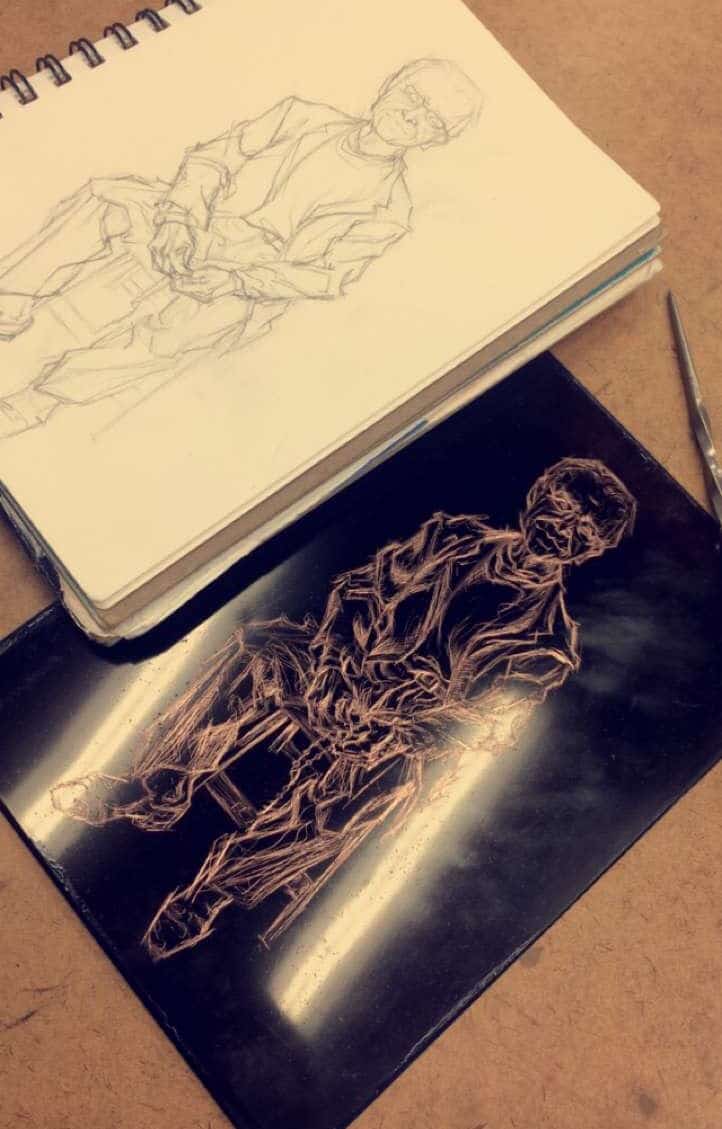
Concept sketch and drawing on resin-covered copper plate.
Once the plate is submerged in the acid bath, the acid will eat away at the exposed portions of the plate, etching the artist’s image into the surface of the plate.
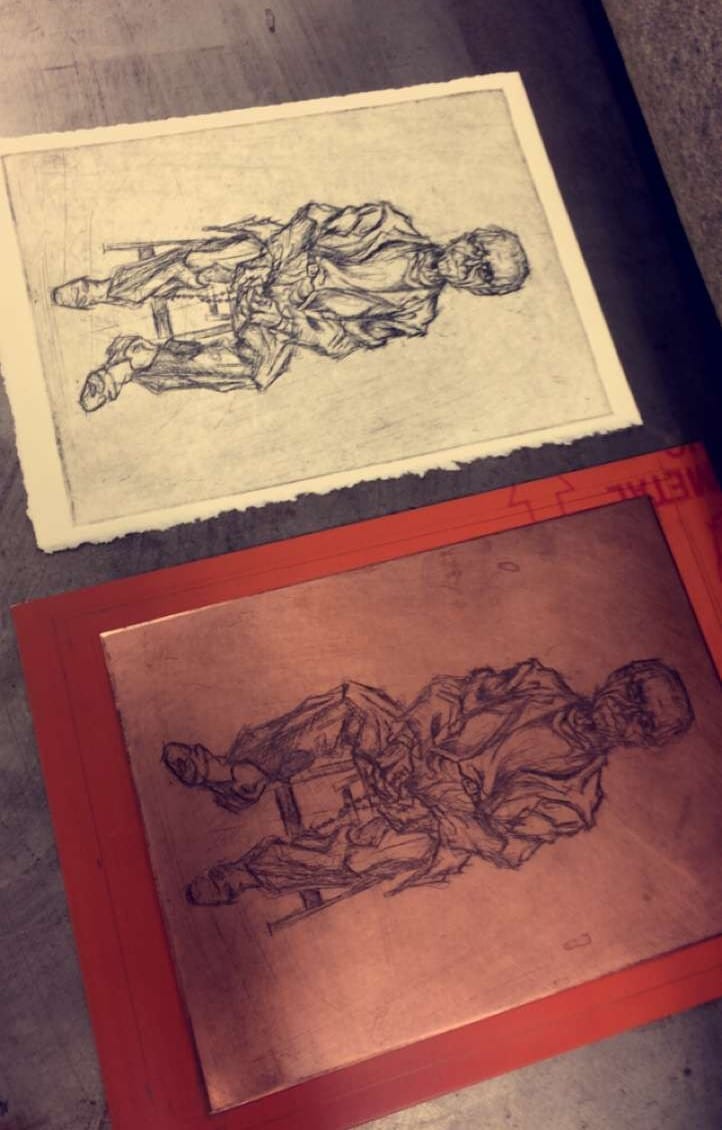
Etched and inked copperplate and final print.
Once etched, the copper plate will retain ink in the etched grooves. It can then be run through the press to transfer the image from the plate to the paper.
From there, the plate is cleaned to remove the ground, inked, and printed in much the same manner as an engraved plate. Etchings closely resemble engravings except that, upon close inspection, etched lines have a coarser quality than engraved lines which tend to be more continuous and smooth. Similarly, the etched line typically has a more blunt end while the engraved line tapers to a point.
Aquatint
Much like etching, aquatint is a printmaking process reliant on acid to form the image on the metal plate. Unlike etching, aquatint is not a line-based printing method but instead renders the image through different tonal effects, much like shading. In the aquatint process, the acid-resistant ground is dusted or sprayed onto the plate so that the coverage is selectively incomplete leaving deliberate porous swathes. The result is a granular image of varying tonalities that correspond to the amount of ground applied in particular areas of the plate.
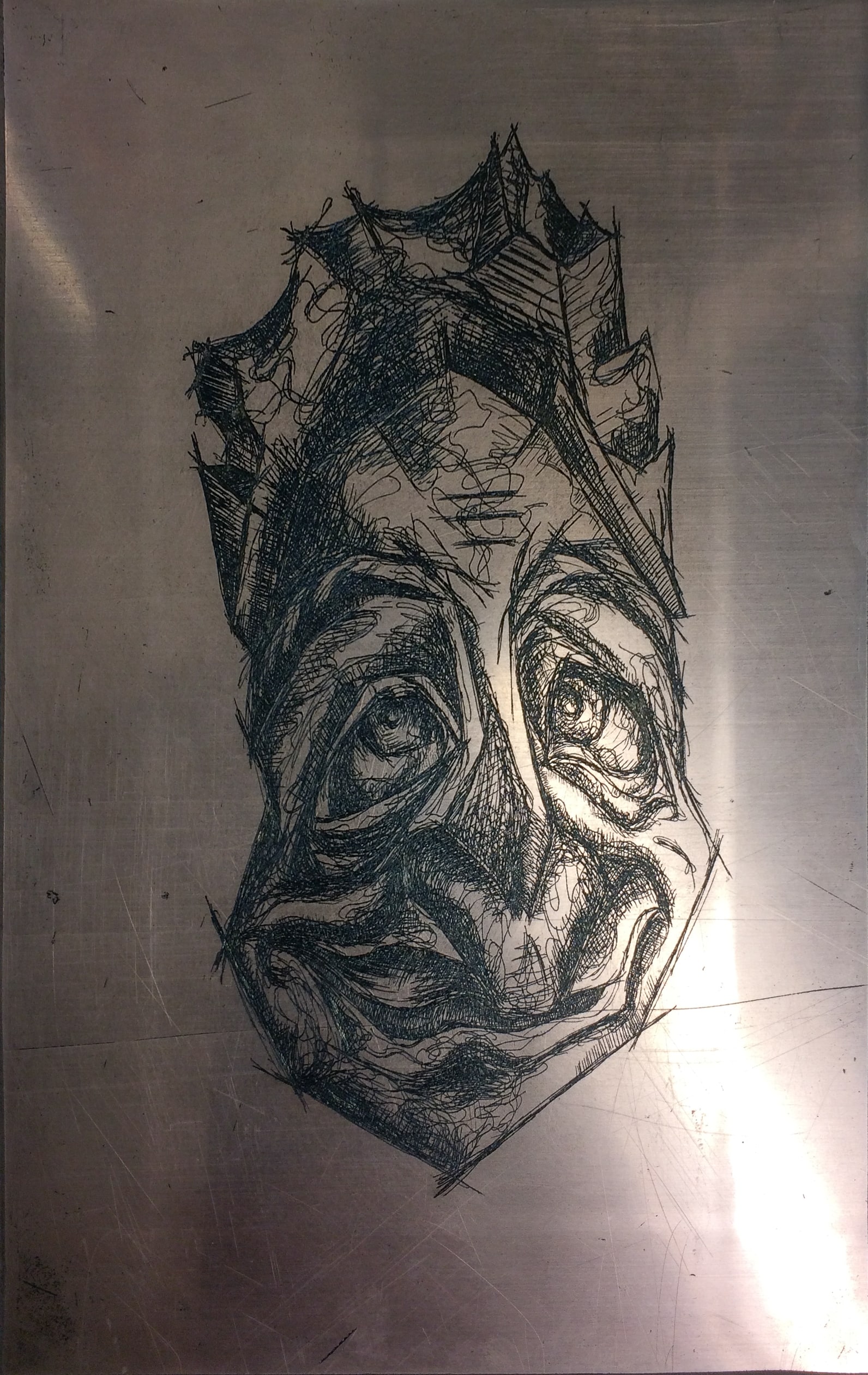
Etched and inked copper plate
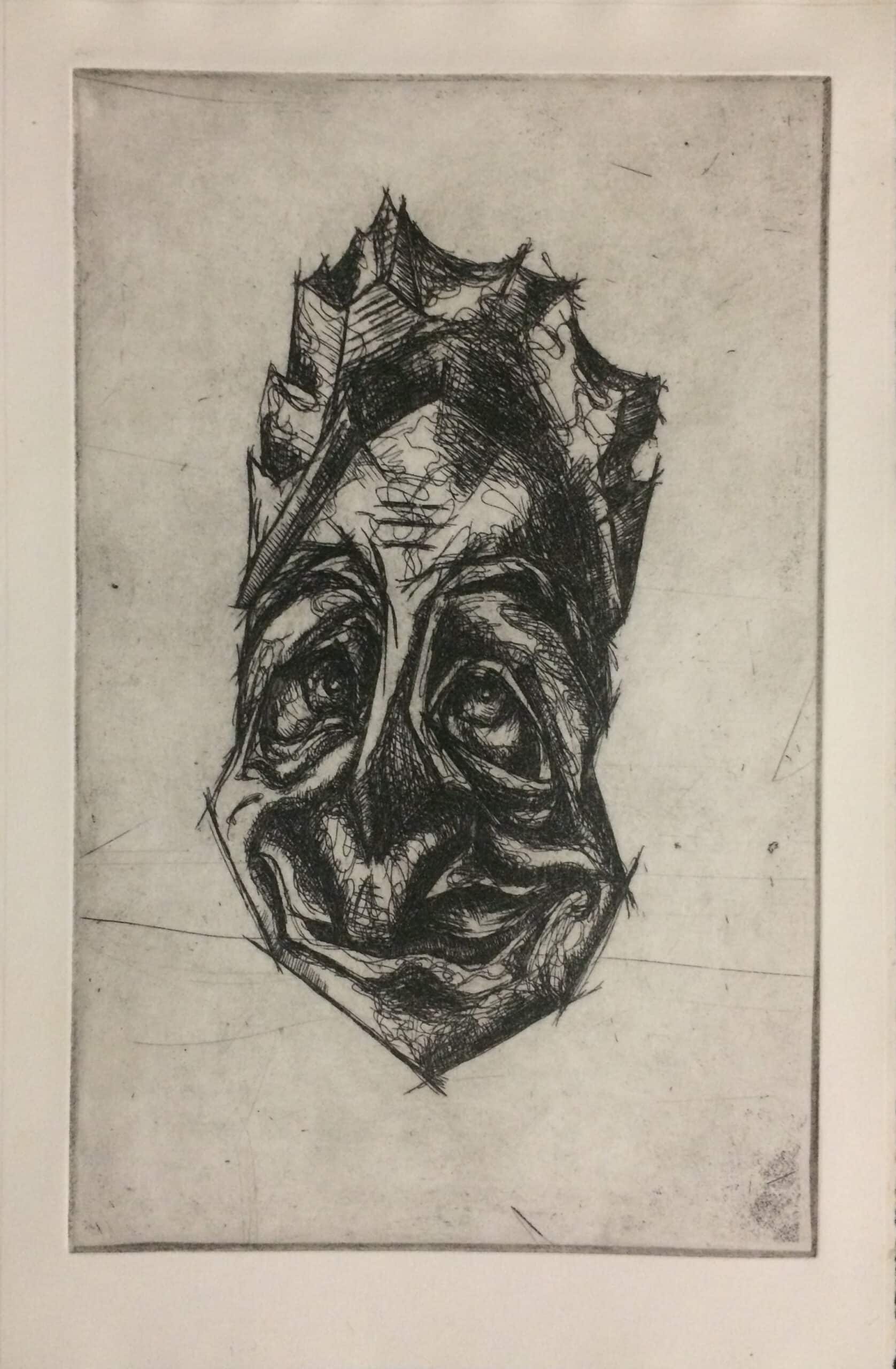
Printed etching on paper

Printed etching with aquatint on paper
Due to its granular appearance, aquatint is frequently used in conjunction with etching or engraving to add shading and tonality, as can be seen in John James Audubon’s Black Vulture which was engraved and printed by Robert Havell. In addition to line etching, Havell uses aquatint to capture the tonal variation of the bird’s plumage and to achieve a greater range of values which enhances the form and solidity of the composition.
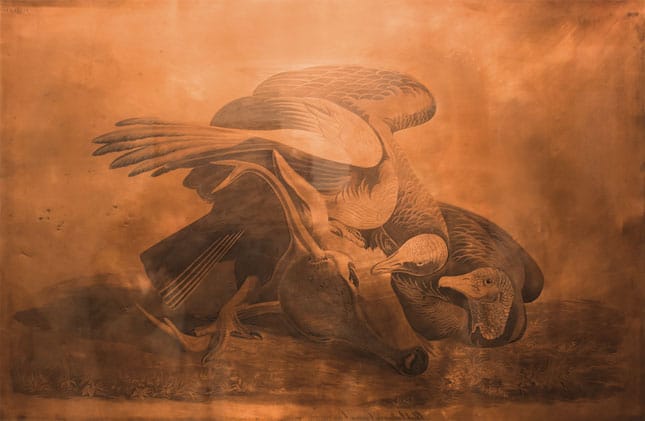
Robert Havell’s etched copperplate of Audubon’s Black Vulture
Yale Peabody Museum of Natural History
Audubon Havell edition Pl. 106, Black Vulture
Hand-colored aquatint etching on Whatman paper
Mezzotint
Similar in appearance to aquatint, mezzotint is a manual engraving technique used to create tonal values. Using a serrated tool called a rocker, the artist systematically inscribes the metal plate surface with small, uniform indentations. Then, working from darkest to lightest values, the artist burnishes select areas of the plate to lighten them by smoothing out to indentations. This technique is highly effective in producing dark and rich tones as well as subtle tonal gradation as can be seen in this artwork by Dr. Robert Thornton.
Thornton Pl. 14, Night Blowing Cereus
Using a skilled combination of mezzotint, aquatint, stipple, and line engraving, Thornton’s print captures a range of values and distinctive textures.
View Product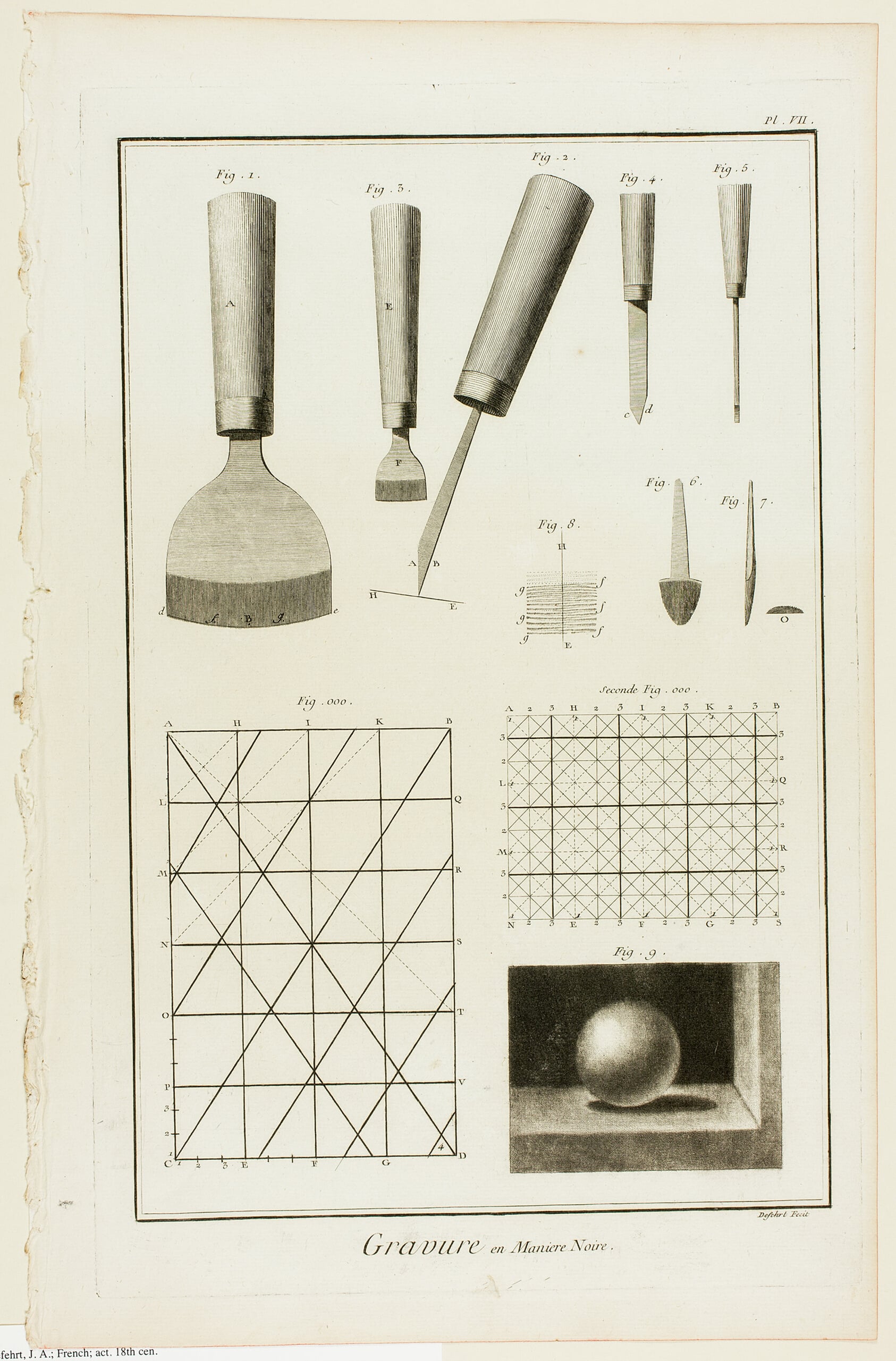
Mezzotint Tools by A. J. Defehrt from Encyclopédie, 1762 – 1777. The Art Institute of Chicago Collection.
Fig. 1 and Fig. 2 depict mezzotint rockers
Stipple Engraving
Often a combination of both etching and engraving (i.e. acid and manual) techniques, stipple engraving is a method of rendering shapes and tones through dots and short flicks. Rather than continuous lines, the imagery is rendered onto the metal plate through a series of dots that lend a soft, atmospheric appearance to the impression. Often used in conjunction with other engraving and etching techniques, stipple engraving is particularly well suited for delicate subject matter such as botanical imagery. Pierre-Antoine Poiteau’s depiction of the common persimmon is an exemplary use of stipple engraving, demonstrating its elegant appeal.
Conclusion
The intaglio printmaking processes discussed in this guide are but a few of the historical techniques used to produce image multiples. The commonality between intaglio printmaking processes lies in that the ink is held in an incised area. By contrast, other traditional printmaking techniques such as woodcut and lithography rely on relief and planographic processes to render the image.
Detail of Poiteau’s Pl. 203, Plaqueminier de Virginie
Stipple engraving


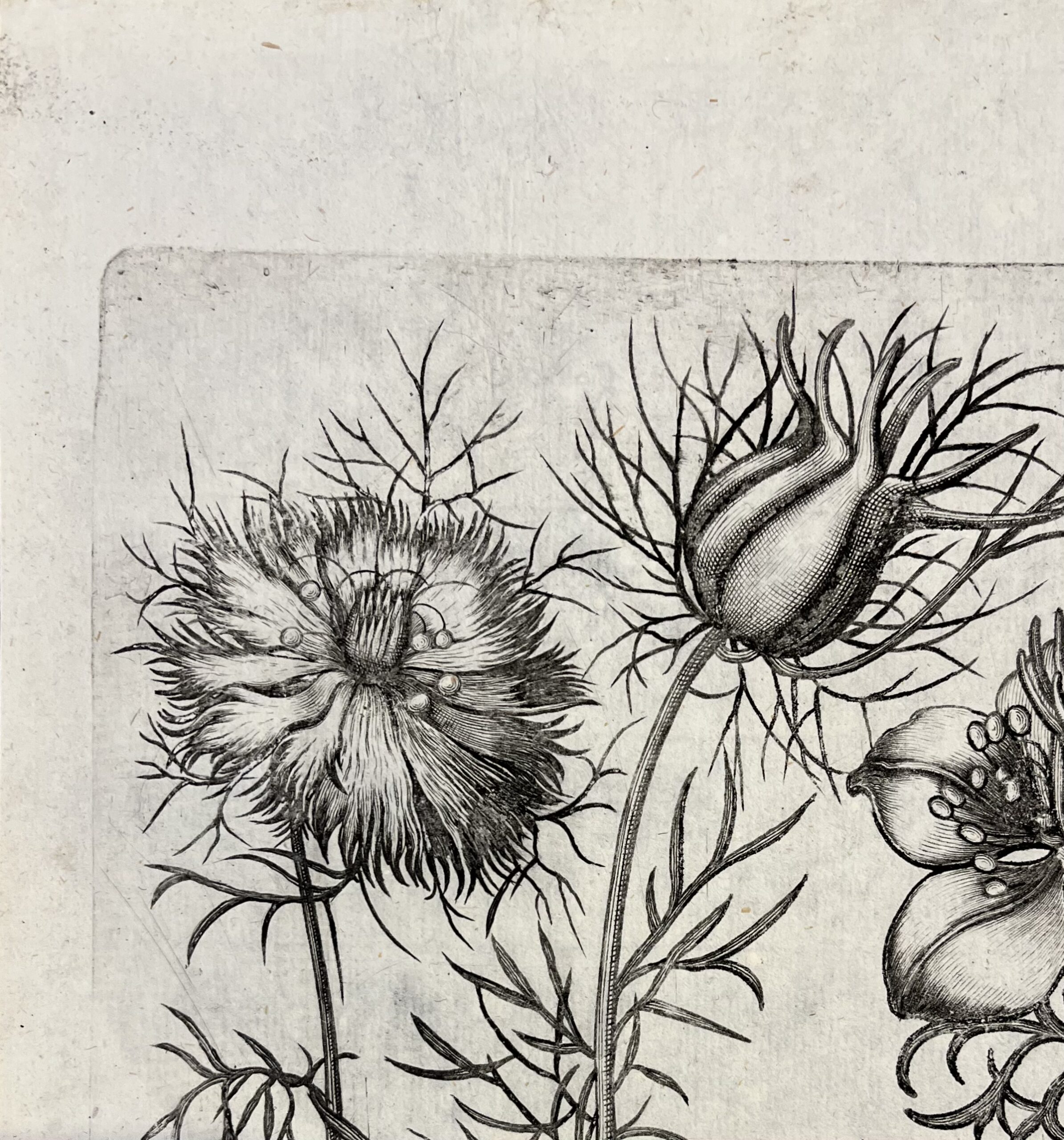
![[HAV-0106-C1]](https://www.audubonart.com/wp-content/uploads/2023/06/HAV-0106-C1-Audubon-Havell-Ed.-Pl.jpg)
